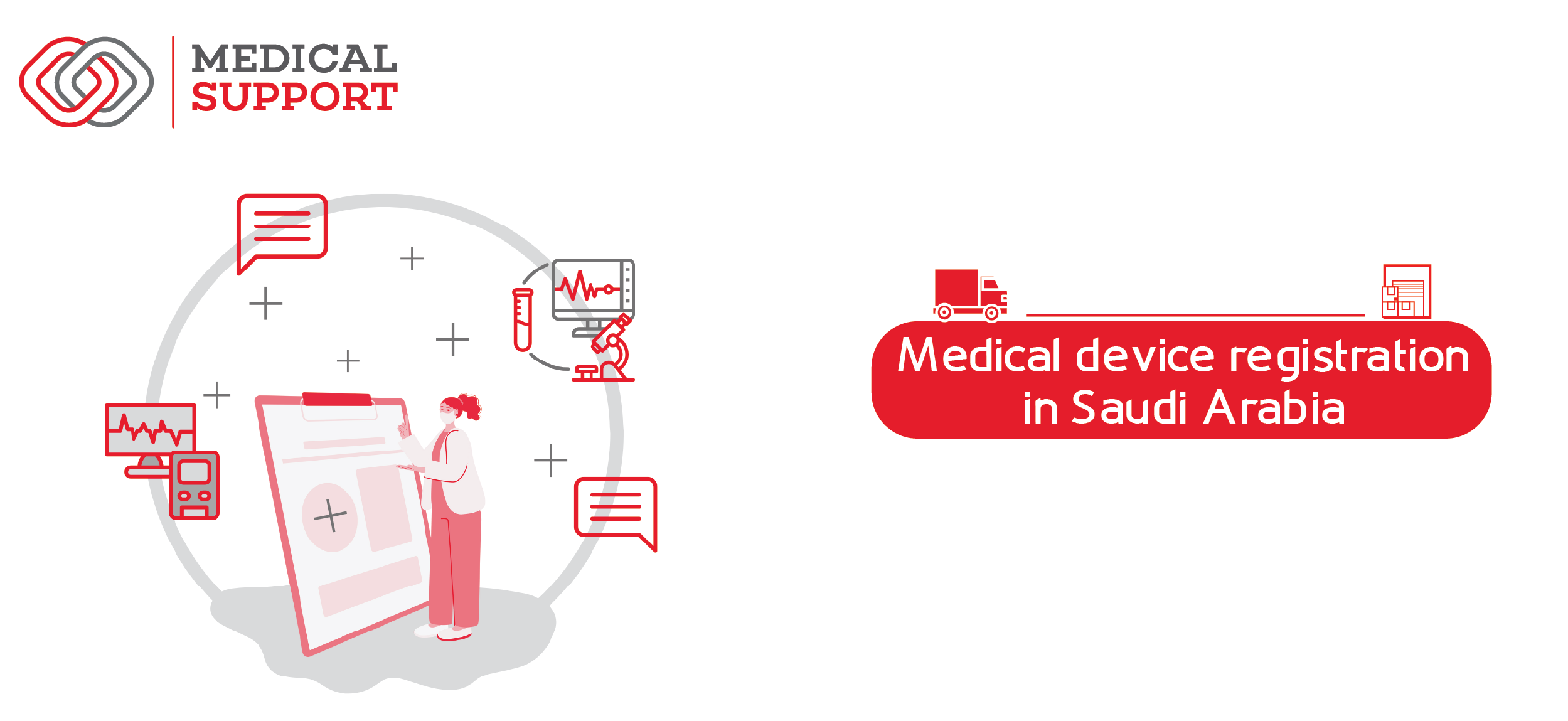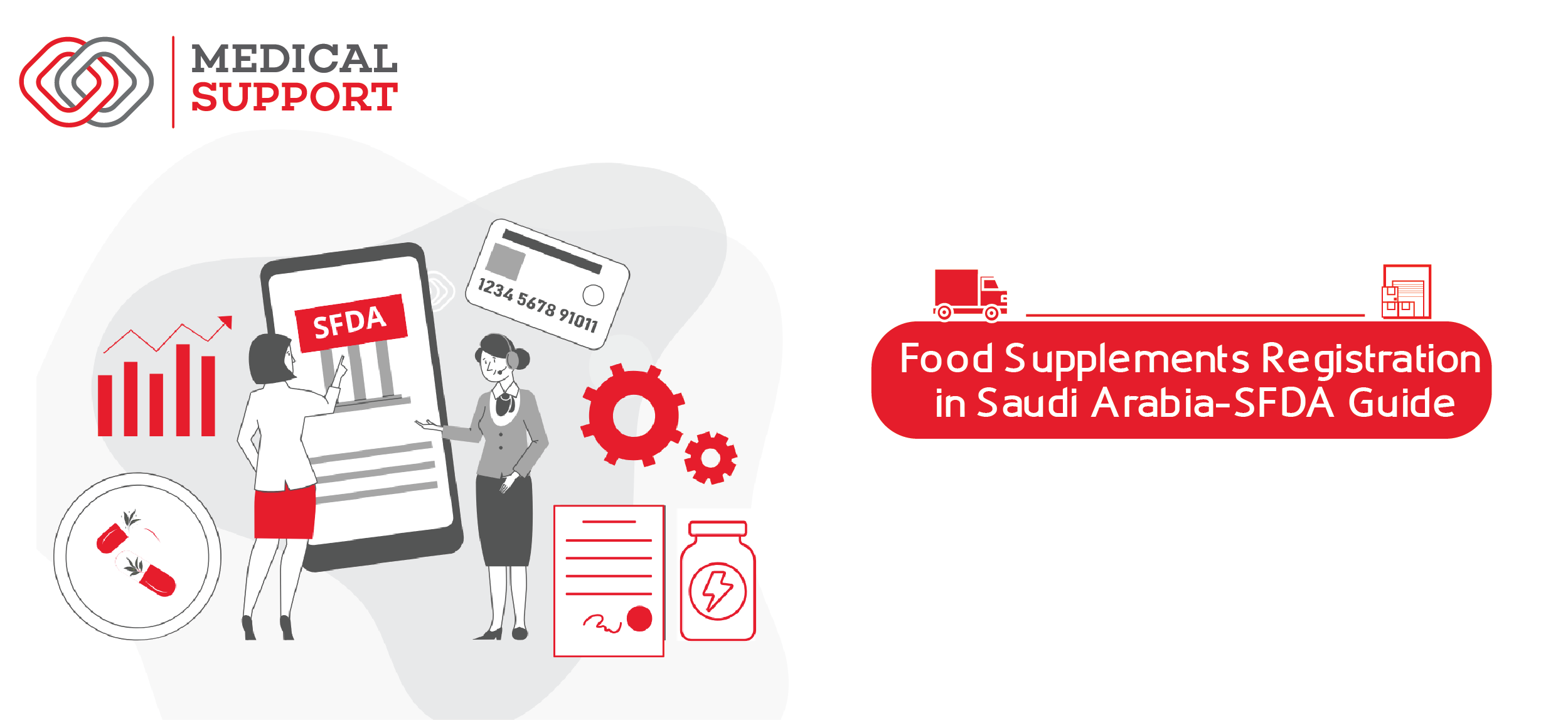Registering medical devices in Saudi Arabia is an essential step for Medical Device Manufacturers, and their distributors, as it ensures the quality and safety of devices before they are introduced to the market.
The Saudi Food and Drug Authority (SFDA) oversees this process under strict regulations that comply with international requirements
This helps verify the efficiency of medical devices, protect users’ health, and enhance confidence in the medical devices available in the Kingdom. In this article, we explore everything you need to know about medical device registration in Saudi Arabia.
Why is Medical Device Registration Essential in Saudi Arabia?
Registering medical devices in Saudi Arabia is essential for several several reasons, including:
- Ensuring Quality and Safety: Registration ensures that medical devices meet the strict standards set by the Saudi Food and Drug Authority (SFDA), reducing the risk of potential defects and safeguarding patient safety.
- Compliance with Regulations and Legislation: It helps companies and manufacturers comply with local and international regulations, facilitating sales and distribution within the Kingdom، making an easy entry to the Saudi medical device market.
- Protecting Users’ Health: By inspecting and approving medical devices, the registration process ensures their efficiency and effectiveness, minimizing health risks associated with non-compliant products.
- Facilitating Import and Distribution: Medical devices cannot be imported or sold in the Kingdom without registering them. Registration also facilitates importing medical devices into the Kingdom of Saudi Arabia.
Passing the Saudi Arabia medical device regulations process with the Saudi Food and Drug Authority is a significant achievement as it allows companies to market their products in the Kingdom of Saudi Arabia.
Understanding SFDA Regulations for Medical Devices
The (SFDA) approval for medical devices is one of the most crucial steps in obtaining medical device registration in Saudi Arabia. The SFDA has outlined a set of Requirements that must be followed to obtain SFDA licensing for medical devices, which include the following:
- Medical device may be placed on the market and/or put into service within the KSA only if it is registered at SFDA through “Medical Devices Listing” or by obtaining Medical Devices Marketing Authorization (MDMA) depending on type and risk-based classification of the device.
- Medical device shall comply with the “Essential Principles of Safety and Performance”
- Medical device manufacturer shall: Prepare, hold and update the “Medical Device Technical Documentation” and/or “IVD Technical Documentation” that confirm to “Essential Principles of Safety and Performance” Establish, document and maintain an effective quality management system (QMS) according to the international ISO standard (ISO 13485:2016) or any identical adopted standard for the same issue/version.
Step-by-Step Medical Device Registration Process
There are many questions about how to register a medical device in Saudi Arabia. By following a series of steps, medical devices registration can be finished in the Kingdom. The steps are as follows:
Step 1: Obtain a Facility License
Before starting the registration process, companies must acquire a facility license from the SFDA. This license grants them authorization to import and distribute their products in the Saudi market while ensuring compliance with essential safety and quality standards.
Step 2: Appoint a Local Authorized Representative (LAR)
Foreign manufacturers are required to designate a Local Authorized Representative (LAR) to act on their behalf in Saudi Arabia. The LAR ensures compliance with SFDA regulations and serves as the primary point of contact with the authority.
Step 3: Classify Your Medical Device
Medical devices must be classified according to their risk level:
- Class A: Low risk
- Class B, C, and D: Increasing levels of risk
Step 4: Prepare Technical Documentation
Manufacturers must submit technical documentation, including:
- Device specifications and description
- Instructions for Use (IFU)
- A risk management plan
- Post-market surveillance strategies
Step 5: Register and Apply via the GHAD System
The SFDA’s GHAD system is an online platform where manufacturers can register their company and medical devices, submit the MDMA application, pay fees, and track application progress.
To prevent delays, all required documents must be complete and accurate when submitting the Application Form for Medical Devices Marketing Authorization through the GHAD system, Manufacturers must register via the GHAD platform.
Step 6: Obtain SFDA Approval for Medical Devices
Following a successful evaluation, the SFDA issues an MDMA certificate, authorizing the device for sale. This certificate includes:
- Manufacturer details
- National registration numbers
- Device classification and intended purpose
The certificate is generally valid for one year and can be renewed.
Appointing an Authorized Representative
Foreign manufacturers looking for registration medical devices in Saudi Arabia must appoint a Local Authorized Representative (LAR). The LAR acts as a legal representative within the country and ensures compliance with the Saudi Food and Drug Authority (SFDA) regulations.
Key Responsibilities of the LAR:
- Serving as the primary point of contact between the manufacturer and SFDA.
- Ensuring that all documentation and regulatory requirements are met.
- Handling the submission of the Medical Device Marketing Authorization (MDMA) application.
- Managing post-market surveillance, including reporting adverse events or product recalls.
Required Documents for SFDA Medical Device Registration
The Document Submission Requirements for SFDA medical device registration are:
- Detailed device description and specifications
- Risk management documentation
- Instructions for Use (IFU)
- Post-market surveillance strategy
For higher-risk medical devices, additional documents may be required, such as clinical evaluation reports and performance testing data.
Obtaining ISO 13485 Certification
ISO 13485 is an internationally recognized standard and a fundamental requirement for medical device manufacturers. It serves as the foundation for various global market access programs ،The certification provides :
- Management Responsibility: Establishing strong leadership and commitment to quality.
- Resource Management: Effectively allocating resources to uphold quality standards.
- Product Realization: Managing the entire process from design to final delivery.
- Measurement, Analysis, and Improvement: Continuously assessing and enhancing operational processes.
Classification of Medical Devices in Saudi Arabia
The Saudi Food and Drug Authority (SFDA) regulates medical devices through a classification system outlined in the SAFDA Requirements for Medical Devices Marketing Authorization (MDS-REQ1). Manufacturers are responsible for determining the appropriate classification based on specific rules.
The SFDA categorizes medical devices into four risk-based classes:
- Class A: Low risk
- Class B: Low to moderate risk
- Class C: Moderate to high risk
- Class D: High risk
Device classification depends on factors such as intended use, duration of contact with the body, and level of invasiveness.
Common Challenges & Solutions for Entrepreneurs
Entrepreneurs looking to register medical devices in Saudi Arabia often face regulatory and operational challenges. Below are some common obstacles and their solutions:
- Regulatory Complexity – Understanding SFDA requirements can be challenging. Solution: Work with regulatory consultants or a Local Authorized Representative (LAR) for compliance.
- Technical & Documentation Barriers – Preparing risk management files, clinical evaluations, and ISO 13485 compliance can be time-consuming. Solution: Develop complete documentation early to meet SFDA standards.
- Approval Delays – The registration process may take months. Solution: Ensure all submissions via the GHAD system are accurate to prevent delays.
Tips for Ensuring Compliance & Market Success
- Master Saudi FDA regulations for medical devices – Understand classification rules, technical requirements, and documentation standards.
- Ensure Complete & Accurate Submissions – Prepare ISO 13485-compliant documentation and use the GHAD system efficiently.
- Maintain Post-Market Compliance – Implement surveillance, report adverse events, and ensure product quality.
Conclusion
Registering medical devices in Saudi Arabia is a process governed by the SFDA to ensure safety, quality, and compliance with international standards. By understanding SFDA regulations, preparing complete documentation, manufacturers can streamline Saudi medical device market entry . Ongoing post-market surveillance is also essential to maintain compliance and product integrity and regulatory requirements for medical devices in KSA. Successfully navigating these steps enables businesses to establish a strong presence in the Saudi medical device market.





